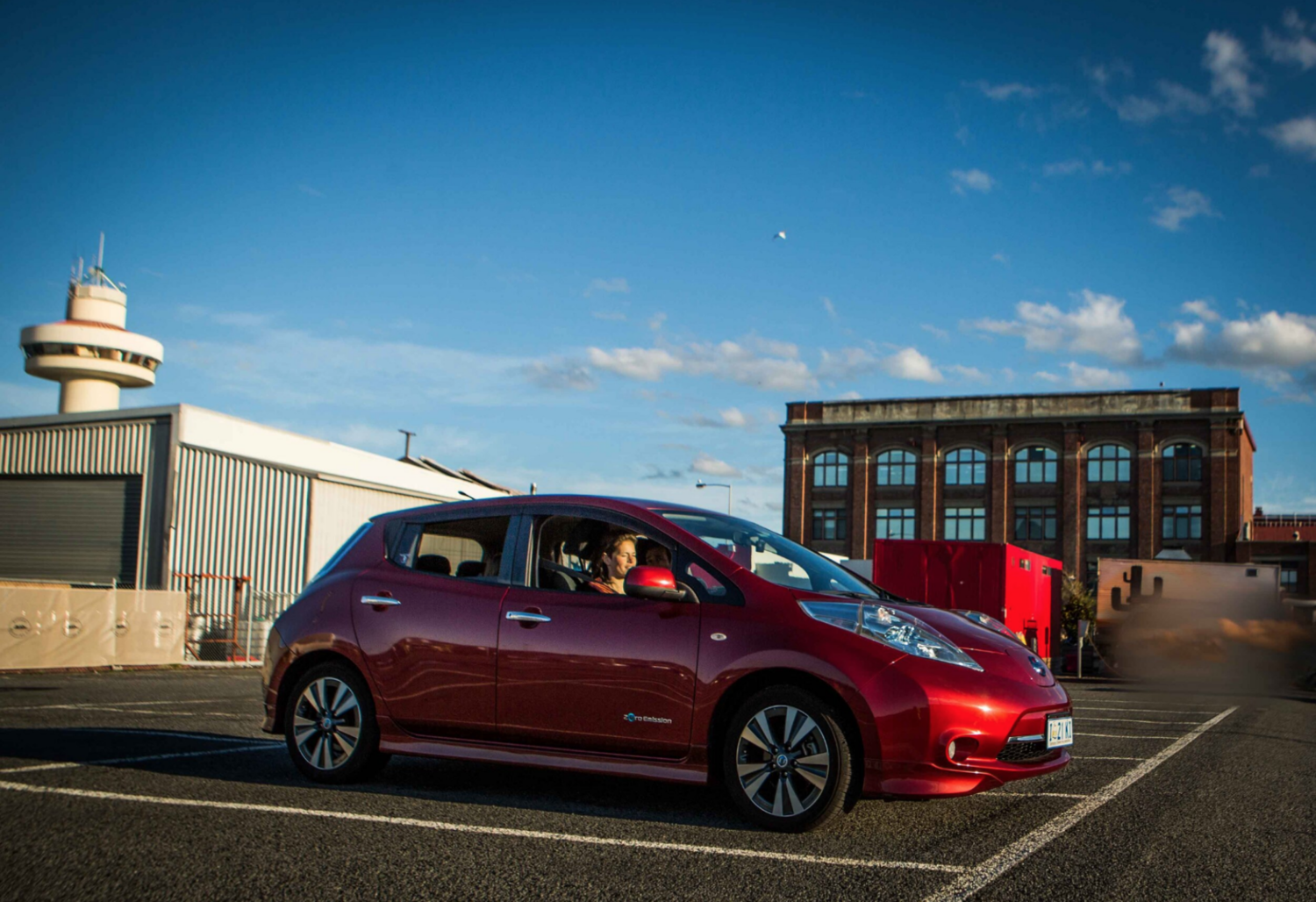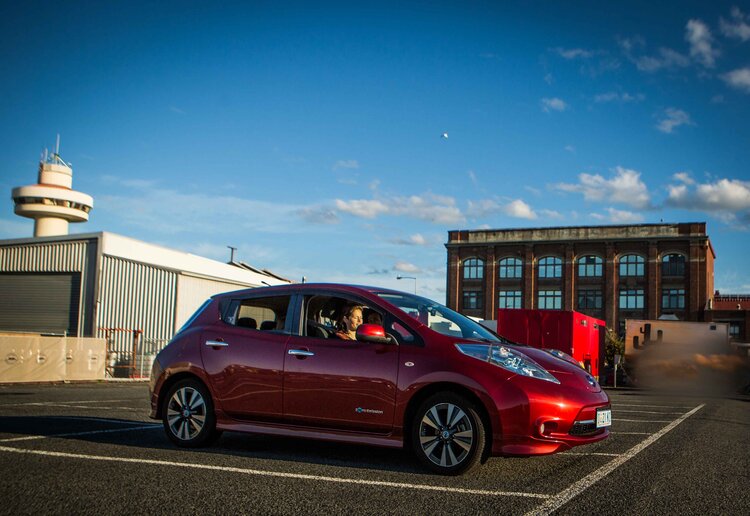The $18,000 Electric Vehicle: The Power of the Used Car Market to Bring Electric Vehicles to Everyone

Transportation is the fastest growing source of carbon dioxide emissions and fossil fuel demand worldwide. That makes zero-emission vehicles a prerequisite for a sustainable future.

A used Nissan Leaf in Hobart
But while our glittering electric future is often defined by the sci-fi innovations of companies like Tesla and Rivian, the reality is that 70% of all car sales in the United States – the second-largest market for electric vehicles (EVs) – are for used vehicles. In Australia, that demand is strong yet the supply of used EV’s is limited. In Australia, the average commute is less than 50km. In over 85% of cases for the typical Australian, a used EV with sub 150km range will easily satisfy the majority of their transport needs.
New cars are exciting and tend to occupy headlines, but used cars are what actually occupy the streets. Nevertheless, manufacturers, policymakers and the general public have given almost no attention to used EVs. To ensure a clean vehicle transition for everyone, regulators can and should adapt established techniques for promoting new EVs to the used EV market.
A Nascent Secondary EV Market Ramps Up
Most cars sold in Australia today are not only pre-owned—they're also driven longer. The typical Australian driver possesses a car more than 11 years old, with the average age of a car increasing 2.5 years between 2000 and 2017.
For the moment, sales trends for electric cars run opposite to those of conventional cars: The majority of electric cars are bought new and only small percentage used. This is not surprising for a new technology without a well-developed secondary market.
In the UK, the price of second-hand electric cars has increased by as much as 14 per cent this year because of soaring demand for green vehicles, research has shown. A shortage of new models and lengthy waiting lists are thought to have inflated the price of used battery-powered vehicles across Britain. The findings come amid a surge in demand for the very cleanest cars, which have zero emissions.
Analysis of the car industry shows that the fastest price increases since January have applied to popular second-hand electric cars, such as the Nissan leaf and BMW i3. The value of combustion-engine cars has fallen over the same period.
As a result of these factors, the supply of used electric cars sometimes dramatically outstrips the demand to buy them. This gap in supply is able to be met though the import of used EV’s into the Australian market, such as the early-generation Nissan Leaf. These EVs were often originally priced above $55,000, but now start around $20,000 for a model that is typically only three or four years old with under 60,000 km.
As we continue to see improvements to battery range and performance, the market for new EVs should expand swiftly, pulling along the secondary market at a similar, yet slightly delayed, pace. As new EVs become better, so will the used ones.
In turn, used EVs will likely be exposed to less price depreciation. This is already being seen with high-end EVs, which have above-average battery ranges and performance specs. Tesla's Model S, for example, not only holds its value three times better than the average electric car, but also two times better than the typical fossil fuel-powered car. As future mass-production EVs reach the range and power of current high-end models, the used EV market will ramp up.
The Power of the Secondary Market
As used electric car options expand, the growing secondary market for EVs could be instrumental in ensuring the air quality benefits of EVs can be experienced by more people. The impacts of trading an old gas car for an EV may be particularly impressive. One recent study found that 25% of the oldest and least maintained cars on the road account for roughly 90% of all vehicle-related pollutants.
The used market shows great potential to knock down steep purchasing prices for EVs, which still tend to run higher than their conventional drivetrain counterparts, at least upfront. While future EVs in the used market may not provide the staggering depreciation they do now, they will still present a cheaper option than buying new.
How to Expand Access
The second-hand market will likely be the best opportunity to bring EVs to a large client base, but only if people are willing and able to buy used EVs. Policymakers have a critical role to play in supporting and growing this market. Here are three actions policymakers currently use to increase new EV access, which could be adapted to boost the used EV market too:
-
Promote alternative access schemes: Governments should incentivise alternative ownership schemes to extend EV access to people who are unable to or do not want to purchase their own vehicle. To help distribute the risk and responsibility associated with used EVs, governments can help establish buyers' clubs, which pool members' collective buying power to leverage bulk purchase prices from manufactures. Policymakers can also increase the economic viability of electric car-sharing programs by including used vehicles in the fleet. Both initiatives could increase demand in the EV secondary market.
-
Provide targeted infrastructure support: Historically, electric car drivers have done roughly 80% of their charging at home. As the used market lowers price barriers, electric cars will be within the price range of more people who do not have their own space to charge at home. Therefore, decision-makers should craft policies to ensure adequate charging infrastructure is provided in or near multi-family buildings, especially low-income housing and other areas where residents may face difficulties plugging in.
-
Establish incentives: Despite the low price of many used EVs on the market today, depreciation rates will likely reach parity with conventional cars as more EVs with decent range and reliability hit the roads. In fact, the long-lasting drivetrains in electrified cars may ultimately help them depreciate slower compared to today's gas-powered fleets. Incentives for new EV purchases are common but almost never extend to the used-car world. In the United States, for example, the federal government provides a tax credit worth up to $7,500 for a new EV purchase, while providing no incentives for used purchases. Extending a comparable incentive to used sales would functionally reduce prices even more, encouraging more demand. Similarly, governments can retool trade-in schemes to financially reward people who replace their old car with a used EV. Furthermore, research from California's incentive program indicates that means-tested monetary policies, which provide larger incentives for people of lower income, can be particularly effective in increasing the overall number of EVs bought, expanding access to a greater cross-section of users.
The newest, flashiest EVs will undoubtably capture the attention of the public and of policymakers. Nevertheless, we must not forget the role of the used vehicle market in supporting the EV transition for everyone.
